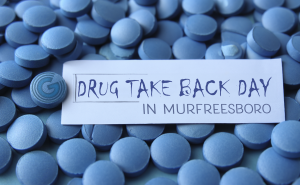(MURFREESBORO) Ascension's St. Thomas Rutherford Hospital has helpful information regarding exposure to the sunshine. The local hospital shows how to protect your skin this summer while debunking 4 myths about sunlight exposure.
Many rumors surround sunlight exposure and its effect on our skin during the warm summer months. Some of these rumors spread potentially lethal misinformation. According to the 2019 Cancer Facts and Figures report by the American Cancer Society, skin cancer is one of the most common cancers in America and kills thousands annually. The report states that many of the more than 5 million skin cancer cases diagnosed annually could be prevented by protecting skin from excessive sun exposure. Don't let the sun stop you from having fun this summer; be well-equipped to protect yourself from the sun's harmful radiation and enjoy some time in the great outdoors!
- MYTH: The sun's UV radiation is stronger when it's hot outside.
The amount of heat coming from the sun has little to do with its harmful UV rays. Whether it's unbearably hot or extremely cold outside, a sunny day will still cause skin damage and will put you at risk for skin cancer. According to Cancer Research UK, the sun's UV rays are actually strongest when the sun is highest in the sky regardless of the temperature outside. Try spending time outdoors earlier or later in the day to avoid the strong UV rays that appear mid-day.
- MYTH: One layer of sunscreen is good enough for the entire day.
The Skin Care Foundation recommends applying sunscreen 30 minutes before sun exposure and reapplying sunscreen every two hours. If you are going to be at the beach or pool, be sure to reapply after getting out of the water and drying off. Failing to reapply sunscreen will expose your skin to harmful UV radiation despite earlier application.
- MYTH: If it's cloudy out, you don't need to worry about protecting yourself from the sun.
The American Academy of Dermatologists states that up to 80 percent of the sun's UV rays can pass through clouds. Even if you can't see the sun, your skin will still be damaged if you're outside for too long. Be sure to protect yourself even on cloudy days!
- MYTH: Sunlight is the only way to get vitamin D.
According to WebMD, there are many other ways to get vitamin D, including from various foods or vitamin supplements. Vitamin D is crucial to improved heart health and protection from bone cancer - but it doesn't only come from the sun!












